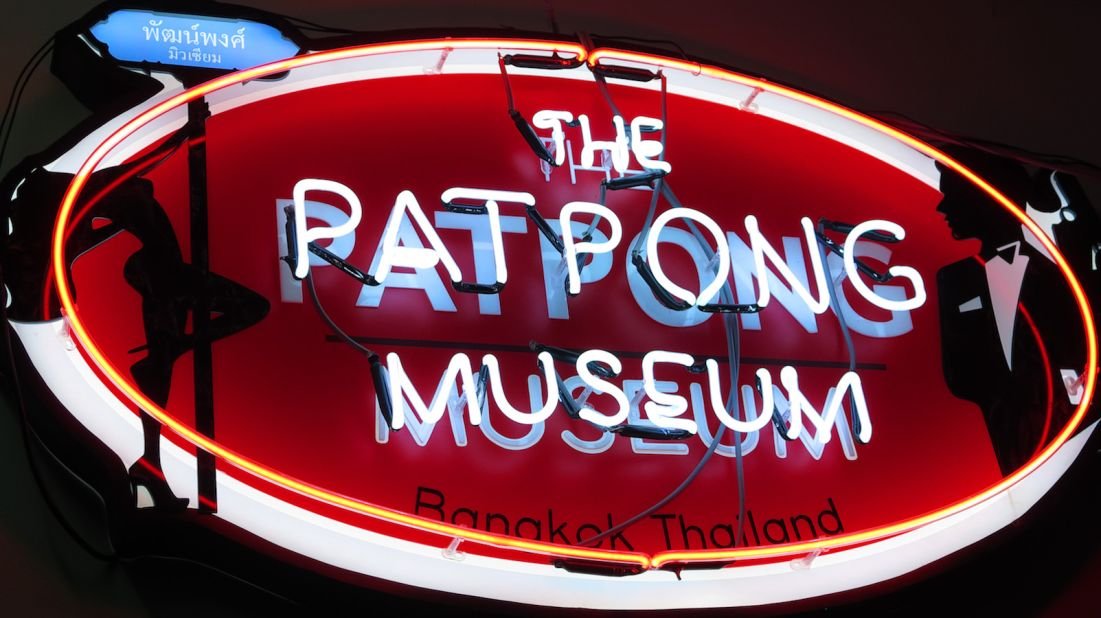The unveiling of the Patpong Museum in Bangkok sheds light on the multifaceted history of one of the city’s most famous red-light districts. This 300-square-meter museum, opened in October, goes beyond the titillating aspects of Patpong Road, known for its nightlife, and delves into its connections with the CIA, the Vietnam War, and Chinese immigration.
While the museum features exhibits on adult entertainment, including “Triple X,” “fetish,” and kinky cabaret displays, it also offers a more nuanced perspective. Visitors can explore tamer exhibits highlighting pop culture, such as David Bowie’s 1983 visit to Bangkok and references to the 1978 war drama “The Deer Hunter,” which reportedly featured scenes shot in the former Patpong bar Mississippi Queen.
However, the museum’s most intriguing purpose lies in documenting Patpong’s unofficial ties to the CIA’s activities in Laos during the US-Vietnam War from the 1960s to 1974. This unconventional focus sets the museum apart, offering insights into why Americans involved in the conflict sought business, friendship, and hedonistic trysts in Patpong.
The museum’s founder and curator, Michael Messner, emphasizes the need to showcase Patpong’s comprehensive history, dispelling the narrow associations many have with the area. Messner, having managed a museum in Austria in the 1990s, redirected his attention to Bangkok’s nightlife, investing in entertainment venues, including some in Patpong.
Patpong Road’s origins trace back to Luang Patpongpanich, a Chinese immigrant who purchased the land when it was a banana plantation. During World War II, Patpongpanich’s son, Udom, reportedly joined the CIA after studying in America, transforming the family’s land into Patpong Road. The museum displays artifacts such as rice bags and bamboo poles, symbolizing the laborers’ burden during the area’s transformation.
Patpong became a hub for various activities, including the presence of the CIA’s safe houses, businesses, and the notorious Air America, a CIA-owned airline that operated covertly in Asia from 1950 to 1959. The museum showcases the interconnection between Patpong’s development and the CIA’s covert operations during the Vietnam War.
Among the exhibits, the museum dedicates a section to Tony Poshepny, widely considered one of the world’s most macabre CIA paramilitary officers. Known as Tony Poe, he joined the CIA front company SEA Supply operating out of Patpong in 1958. The museum presents shocking allegations of Poe’s violent methods, including ordering Hmong rebels to cut off ears and heads during the Laos conflict.
Despite its controversial aspects, the Patpong Museum strives to offer a comprehensive view of Patpong’s history, both seedy and significant. It recreates a slice of Patpong’s former Grand Prix bar, featuring a 3-D projection of a bikini-clad go-go dancer. Additionally, the museum explores contemporary Patpong, showcasing its current S&M fetish bar through Oculus Virtual Reality goggles.
While some critics express mixed feelings about the museum’s exhibits, particularly those delving into the darker aspects of Patpong’s past, Messner defends the approach. He argues that the museum aims to provide a face to the Vietnam War, fostering controversy and discussion rather than glorifying or condemning the individuals involved.
Today, Patpong still features bars and adult entertainment, but its bustling Night Bazaar has become a popular attraction for visitors seeking souvenirs, jewelry, and handicrafts. The Patpong Museum invites patrons to explore the complex history of this iconic district, bridging the gap between sensationalism and historical significance.
